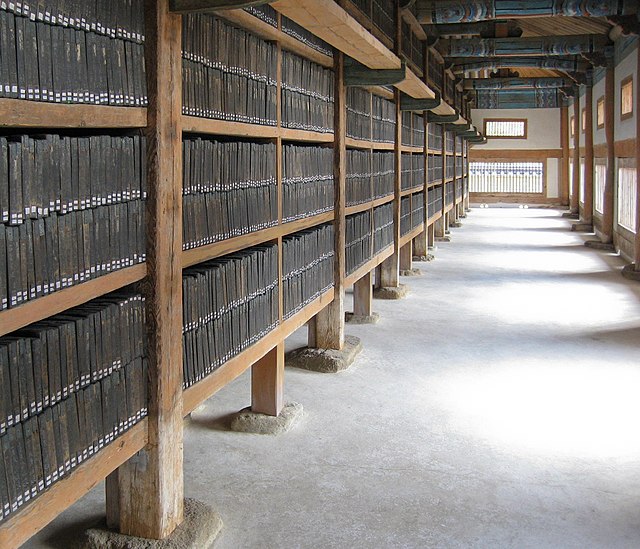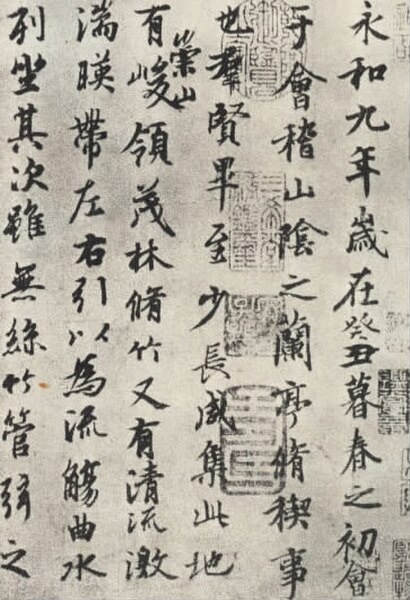The Sui dynasty was a short-lived Chinese imperial dynasty that ruled from 581 to 618. The re-unification of China proper under the Sui brought the Northern and Southern dynasties era to a close, ending a prolonged period of political division since the War of the Eight Princes. The Sui endeavoured to rebuild the country, re-establishing and reforming many imperial institutions; in so doing, the Sui laid much of the foundation for the subsequent Tang dynasty, who after toppling the Sui would ultimately preside over a new golden age in Chinese history.
Tomb of Yu Hong, a Sogdian merchant buried in Taiyuan in 592. Shanxi Museum.
Tomb of An Bei panel showing a Sui dynasty banquet with Sogdian whirl dance and music, 589
Chinese swords of the Sui dynasty dated c. 600, found near Luoyang. The P-shaped furniture of the bottom sword's scabbard is similar to and may have been derived from sword scabbards of the Sarmatians and Sassanians.
Strolling About in Spring, by Sui-era artist Zhan Ziqian
Chinese is a group of languages spoken natively by the ethnic Han Chinese majority and many minority ethnic groups in China. Approximately 1.35 billion people, or 17% of the global population, speak a variety of Chinese as their first language.
The Tripitaka Koreana, a Korean collection of the Chinese Buddhist canon
"Preface to the Poems Composed at the Orchid Pavilion" by Wang Xizhi, written in semi-cursive style






